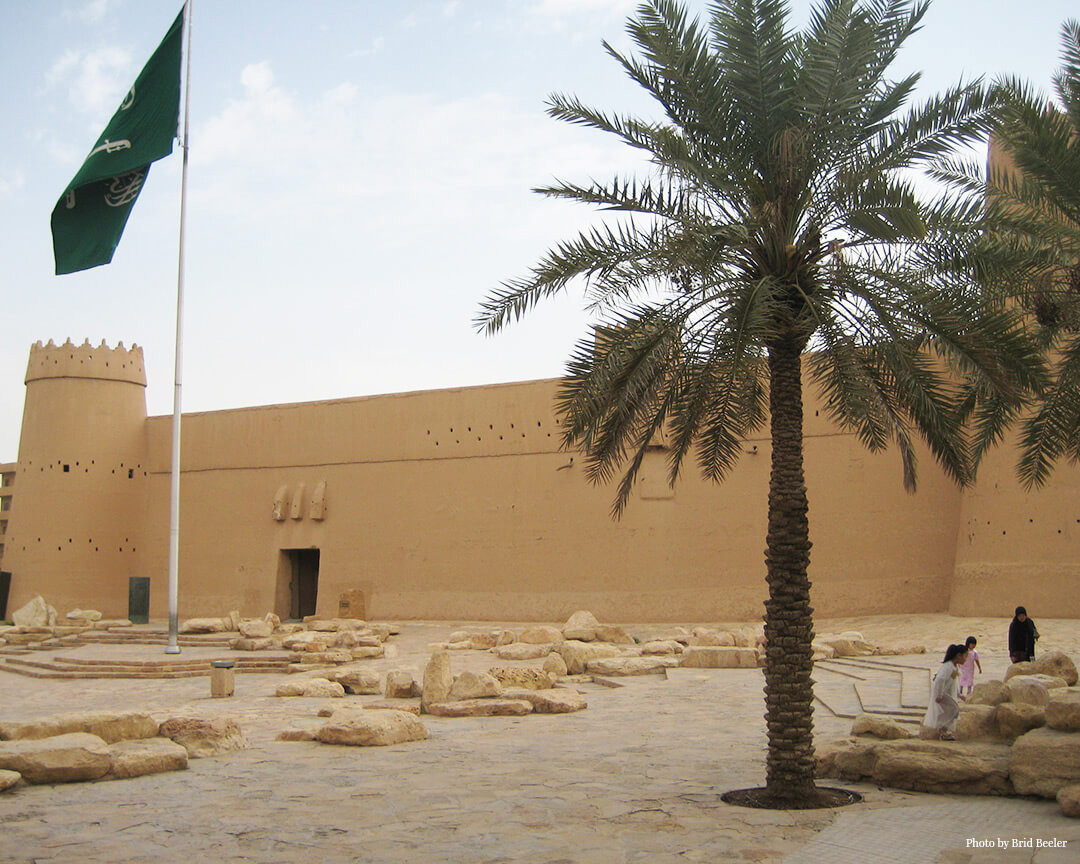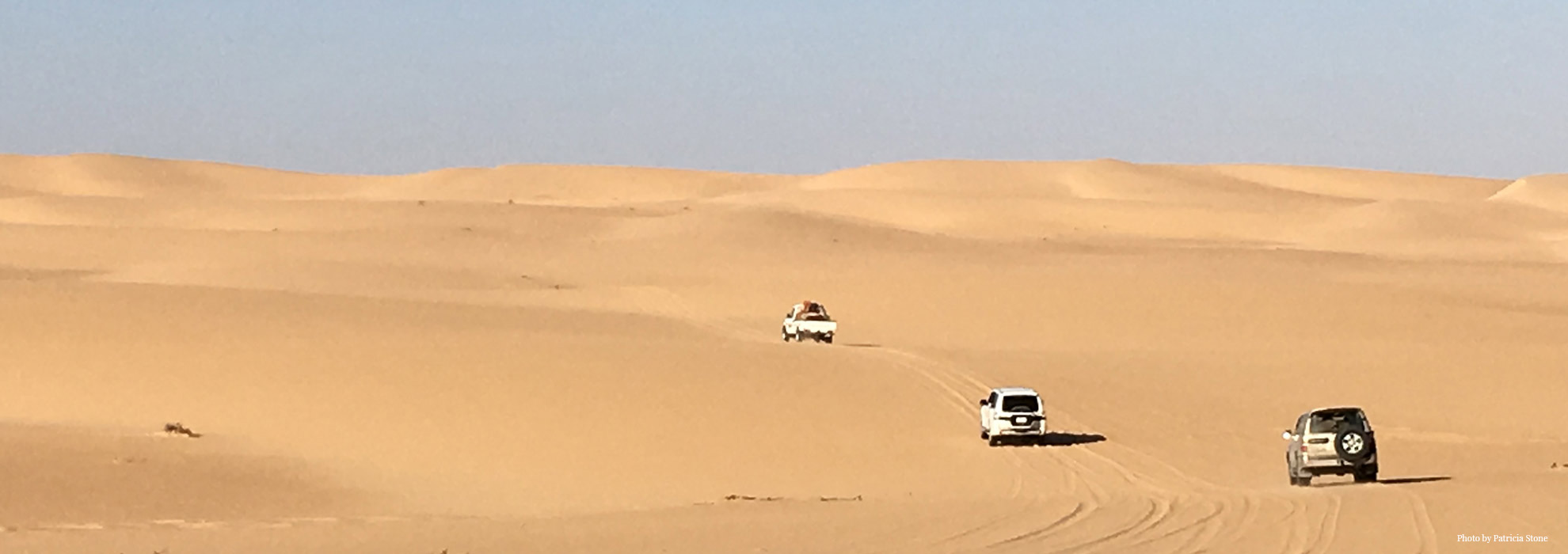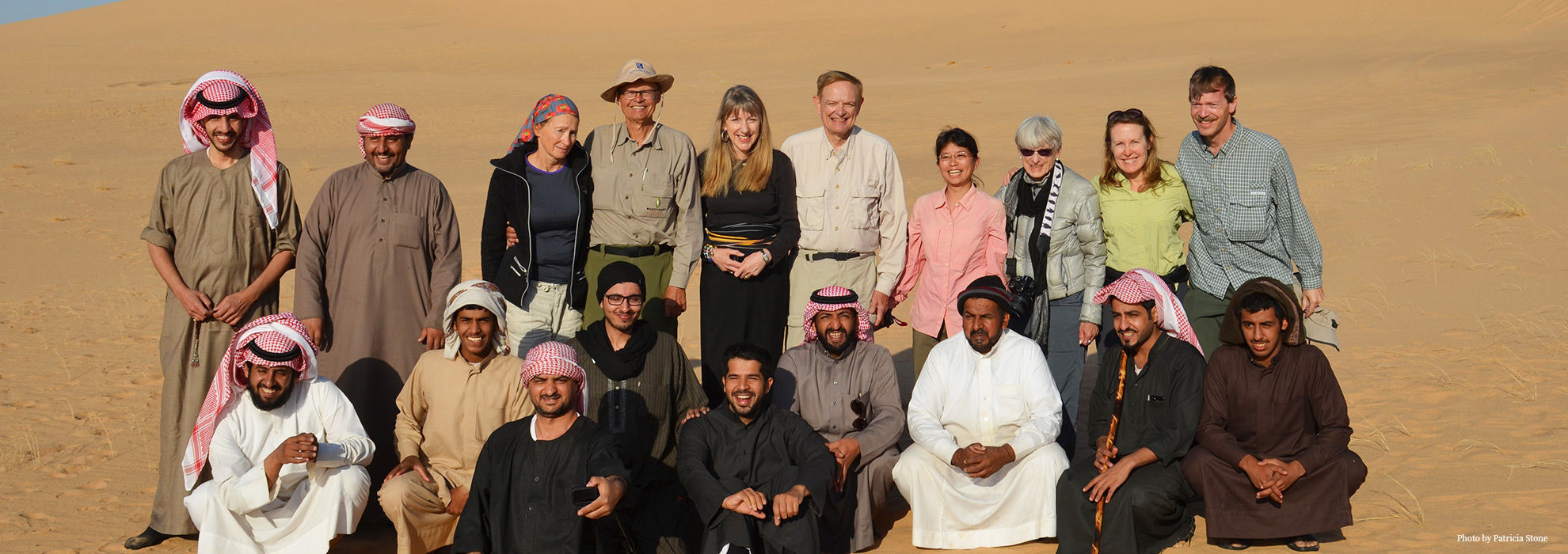Saudi Arabia has played a prominent role in the civilizations of the Arabian Peninsula. For centuries, camel caravans carried their valuable cargos of frankincense, myrh, silks and spices up the length of the peninsula from ancient Southern Arabia, home to the Queen of Sheba, northward to Egypt and the Levant. Control of this valuable trade from their strongholds at Mada’in Saleh and Petra, had made the Nabataean Empire wealthy and powerful by the first century BCE.
Today, a visit to Mada’in Saleh, a UNESCO World Heritage site is a must. Traveling to Saudi Arabia and not seeing this spectacular site would be like going to New York and not seeing the Empire State building. Exploring the tombs of Qasir Al Farid and walking through the Siq to the sound of the wind running through your hair make for a magical visit as the sun sets on the red rock formations created by the wind.
The northern town of Al Jawf nestles on the edge of Al Nafud Al Kabir (the Great Nafud Desert) in an area rich with archaeological sites and petroglyphs. Travelers from the great cities of Baghdad and Damascus once crossed here by camel bound for the two Holy Cities of Makkah and Madinah to perform the annual Haj. Here too, reminiscent of Stonehenge, the mysterious standing stones of Ar Rajajil rise from the rocky plain as they have done for 6,000 years. The old fortress of Qasr Za’bel stands proudly against the sky, while beneath its crenellated walls lies a tranquil oasis of 200,000 date palms and the desert town of Sakaka. One cannot help but feel the depth of history in such a place. A stroll through Domat Al Jondal, brings us to the Mosque of Omar, the oldest mosque in the Kingdom, and its unusual pre-Islamic minaret. Ongoing excavations at the nearby, mud-walled fortress of Qasr Al Meraid have produced findings dating to 688 BC.

Saudi Arabia’s capital, Riyadh, is where the heart of its history beats. Situated in the Najd, Riyadh is a powerhouse of hustle and bustle. Modern high-rise buildings, like the iconic Faisaliyah and Kingdom Towers, break the skyline. But, the old standby, the Ministry of Interior, completed in 1990, resembles a spaceship (beam me up Scotty) and remains unique among all the modern steel and glass that gleams in the midday sun. Riyadh is about history as one explores the foundation of the Kingdom under Ibn Saud’s rule. From Fort Masmak to D’Iriyah, the old capital of the House of Al Saud situated in Wadi Hanifa is not to be missed. Situated on the Turaif escarpment the adobe style buildings at this UNESCO World Heritage site date from the 15th century with recent restoration work. Thirty years ago, it was an afternoon drive to visit the site and picnic sitting on its walls, taking in the silence and majesty of the place. Today, it has become a place of refuge on weekends for both Saudi families and expats. To appreciate the history, a visit to the National Museum will lay the foundation for the richness and treasures the Kingdom offers. Or delve into the antique and carpet souq where treasures are to be found and rub shoulders with Saudi locals.
Jeddah, situated to the west on the shores of the Red Sea, is where the best coral reefs in the world are said to be located by those lucky few who have dived there. The old merchant family homes are in abundance. These homes, built of corral from the Red Sea, once housed major trading families who, like as in most cities in the world, have moved out to larger homes in the suburbs with all the modern amenities. But these grand old dames have stories hidden beneath their layers, and you can allow oneself to be carried away as you wind your way through the alleyways and crooked walls of the old city. The Mashrabiyah windows are at every turn and a visit to one of these homes to see how families lived is a worthwhile venture. Jeddah has always been an outward looking city, looking west towards the setting sun, welcoming pilgrims arriving to visit the nearby holy cities of Makkah and Madinah. It is Saudi Arabia’s ‘melting pot’ and, like any city anywhere in the world that is situated on a seafaring artery, beats to a different drum. Driving the corniche, visiting the floating mosque, or just enjoying the creativity of art installations at every roundabout, makes any visit to Jeddah both spectacular and interesting.

Running south from Jeddah to the Yemeni border at Najran, the mountainous Asir region is the backbone of the Kingdom. Lush vistas and cool weather make the Asir a delight to visit, as do encounters with the naughty baboons. Being on the north south migratory route to Africa, the Asir also boasts abundant birdlife. Old villages perched on precipices are now abandoned for the most part with newer villages having sprung up nearby. Here on the twisty roads, the mountain air is fresh and a shower may surprise you, yet the sun will burst forth from behind the cloud with a rainbow of colors in its midst. The Asir, like many mountain regions elsewhere, is a tight knit community of people who rely on each other and embrace their traditions. It’s where man lives in harmony with the elements. Farming abounds from goats to apricots and it is here, in this mountain community, that artists have emerged with their creativity now being recognized and appreciated internationally. The women of the Asir for generations have been the leader in the art scene, decorating the interior walls of their homes with abstract paintings alive with vivacious colors.
But no journey to Saudi Arabia would be complete without an exploratory trip to the desert, be it a day trip, overnight or several days in the largest sand desert in the world, Ar Rub Al Khali, the Empty Quarter. The Empty Quarter is the size of France with the United Arab Emirates, Oman and Yemen bordering this vast desert frontier.
The Bedouin believe that a story lies locked in each grain of desert sand, and Saudi Arabia’s desert landscape is truly stunning. From Al Nafud in the north, once traversed by the great explorers like Lady Anne Blunt and T. E. Lawrence, to the red sands of Dahna connecting the northern desert to the Empty Quarter, Saudi Arabia boasts some of the most beautiful and varied desert terrain found anywhere in the world. While its name suggests a place of emptiness, desert plants, oryx and gazelle and other wildlife survive in the Empty Quarter’s harsh environment. It is a desert where nature is uncontaminated, where the immensity is simply unforgettable, where the night sky sparkles with billions of stars and the silence is almost audible.





